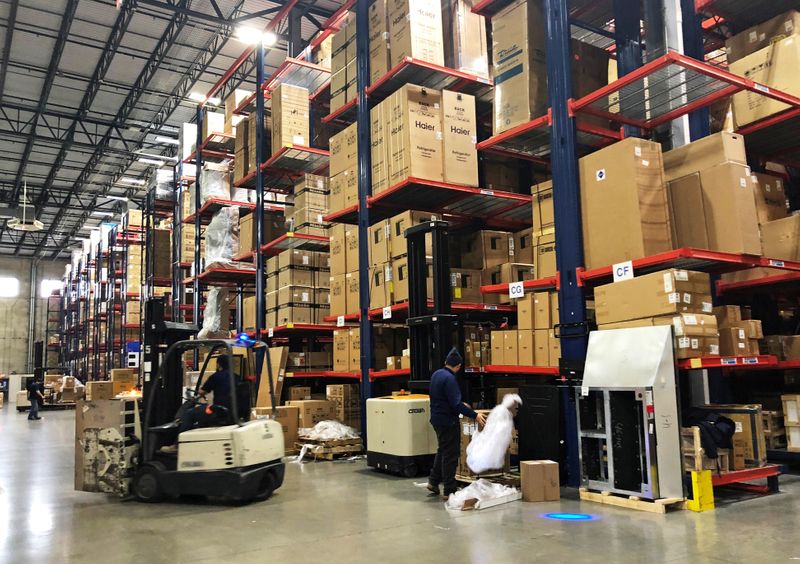WASHINGTON (Reuters) - U.S. business inventories increased solidly in May, but shortages of goods like motor vehicles are making it harder for retailers to restock warehouses to meet booming demand.
Business inventories rose 0.5% after edging up 0.1% in April, the Commerce Department said on Friday. Inventories are a key component of gross domestic product. May's increase was in line with economists' expectations.
Inventories increased 4.5% on a year-on-year basis in May.
Retail inventories decreased fell 0.8% in May as estimated in an advance report published last month. That followed a 1.7% decrease in April.
Motor vehicle inventories decreased 5.5%, rather than 5.3% as estimated in an advance report published last month. A global semiconductor shortage is undercutting auto production, leading to stocks being run down and prices of used car and trucks soaring, boosting inflation.
Retail inventories excluding autos, which go into the calculation of GDP, increased 0.9% as estimated last month.
Raw material and labor shortages are making it difficult for businesses to restock. COVID-19 vaccinations, low interest rates and nearly $6 trillion in government relief since the pandemic started in the United States in March 2020 are fueling demand., straining the supply chain.
Inventories were depleted in the first quarter. The inventory drawdown subtracted 2.7 points from GDP growth in the January-March quarter. Most economists are forecasting GDP growth just under a 10% annualized rate in the second quarter. The economy grew at a strong 6.4% rate in first three months of the year after expanding at a 4.3% pace in the fourth quarter.

Wholesale inventories rose 1.3% in May. Stocks at manufacturers advanced 0.9%.
Business sales fell 0.3% in May after increasing 0.6% in April. At May's sales pace, it would take 1.26 months for businesses to clear shelves, up from 1.25 months in April.